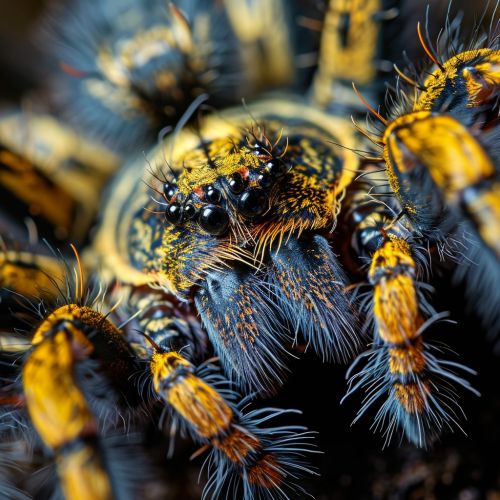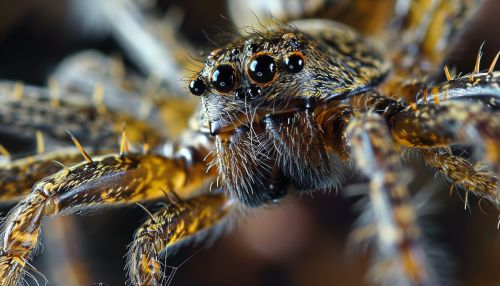Arachnid
Introduction
Arachnids are a class of joint-legged invertebrate animals, in the subphylum Chelicerata. They are primarily terrestrial, living in a wide variety of habitats, and include over 100,000 named species, making them among the most diverse groups of animals on the planet.
Anatomy and Morphology
Arachnids have bodies divided into two tagmata: the prosoma (or cephalothorax), and the opisthosoma (or abdomen). The prosoma bears the appendages: the chelicerae, pedipalps and four pairs of legs. The opisthosoma is typically segmented and, unlike in insects, does not bear any appendages, but may contain reproductive organs, the digestive tract, and the respiratory and excretory systems.


Evolution and Classification
Arachnids are part of the larger group, the Arthropods, which also includes insects, crustaceans, and myriapods. The earliest known arachnids are from the Silurian period, over 400 million years ago. They have diversified into a wide range of forms, including spiders, scorpions, ticks, mites, and solifuges.
Ecology and Behavior
Arachnids are found in nearly all terrestrial habitats, from the highest mountains to the deepest caves. They are typically carnivorous, feeding on smaller invertebrates, although some groups have adapted to other diets. Arachnids exhibit a wide range of behaviors, from the complex mating dances of some spiders to the communal living of certain mites.
Human Interaction
Arachnids have a complex relationship with humans. Some are feared for their venomous bites or stings, while others are valued for their role in controlling pest populations. Many arachnids, particularly spiders, have cultural significance, appearing in myths, folklore, and literature across many cultures.
